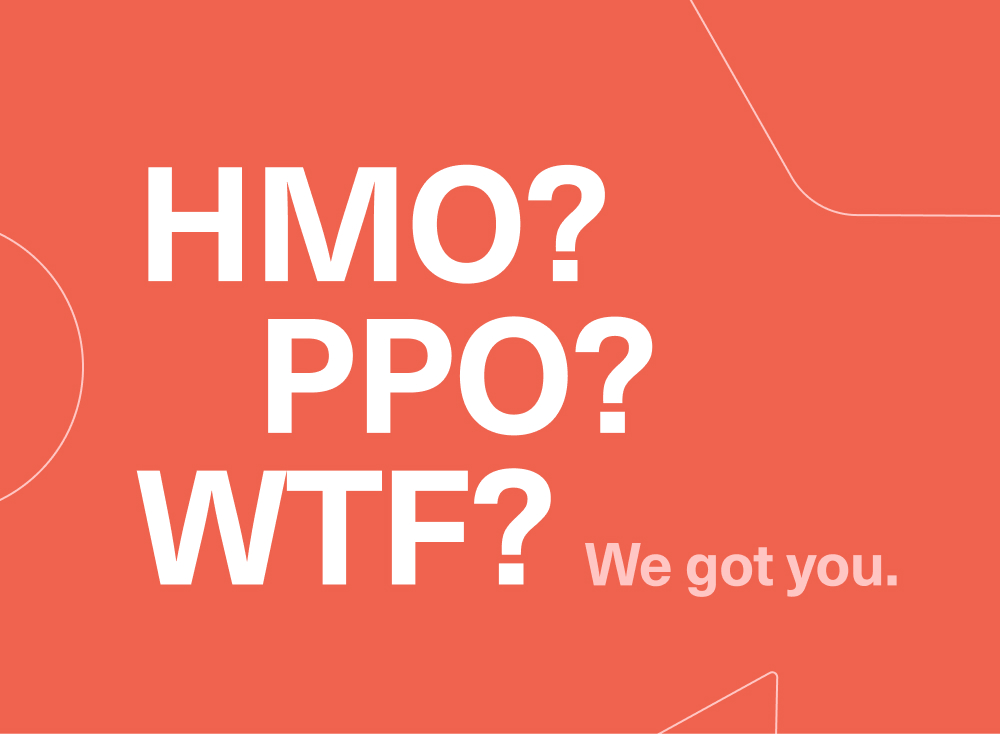Top 10 health insurance acronyms small business owners should know

Health insurance is complex and confusing at a baseline. Toss in dozens of acronyms you don’t know, and it becomes even more so!
If you’re a small business owner, and you don’t already offer health insurance to your employees, you have probably at least looked into doing so. Why? Because employers are the de facto supplier of health insurance in the U.S. Because individual health coverage is so expensive, group health insurance is a perk most workers expect their jobs to provide.
Employers insure 49% of the U.S. population through employer-sponsored health insurance, also called group health insurance. And 56% of small business owners offer employee health benefits even though they’re not required by law to do so — because they know how important it is to their employees.
What we’re saying is this: Like it or not, the majority of small business owners and HR leaders have to acquire a basic understanding of small business health insurance, including its numerous acronyms.
Below we define the top ten health insurance acronyms we think you’ll encounter most as a small business owner.
Top 10 health insurance acronyms:
Top 10 health insurance acronyms1. ACA — Affordable Care Act
A healthcare reform law enacted in March 2010 that requires employers with 50 or more full-time equivalent employees to offer health insurance that is both affordable and meets a minimum standard of value
2. EPO — exclusive provider organization
A type of health plan that generally doesn’t require members to choose a primary care physician for referrals but only covers healthcare services if members go to doctors and hospitals in the plan’s network
3. FSA — flexible spending account
An arrangement through an employer that’s compatible with most insurance plans and allows employees to set aside untaxed dollars (up to a certain limit set by the employer) to cover out-of-pocket medical expenses — such as prescriptions, deductibles, copays, and coinsurance
4. HDHP — high deductible health plan
A type of health plan that has lower premiums and a higher deductible than a traditional health plan (Note: For 2022, the IRS defines a HDHP as a plan with a deductible of at least $1,400 for an individual or $2,800 for a family.)
5. HMO — health maintenance organization
A type of health plan that requires members to choose a primary care physician for referrals and only covers healthcare services if members go to doctors and hospitals in the plan’s network
6. HSA — health savings account
An arrangement through an employer that’s compatible with high deductible health plans and allows employees to set aside untaxed dollars to cover out-of-pocket medical expenses — such as prescriptions, deductibles, copays, and coinsurance (Note: Since they are less expensive for businesses, some employers choose to offer HDHPs and then contribute a portion of what they save on premiums to their employees’ HSAs.)
7. OOPM — out-of-pocket maximum
The maximum dollar amount a covered individual will have to pay out of their own pocket in claims, copays, and coinsurance for covered services over the course of the plan year
8. PPO — preferred provider organization
A type of health plan that doesn’t require members to choose a primary care physician for referrals and allows out-of-network care for a higher cost
9. QLE — qualifying life event
An occurrence — such as losing health coverage, getting married, moving to a different zip code, or having a baby — that enables an individual/family to enroll in a new plan outside of the standard enrollment period for that plan
10. SPD — summary plan description
A comprehensive document employers give to their employees who are participating in their retirement or health benefits plans that outlines the benefits provided by the plan in easily understandable, plain language
To continue learning about the basics of small business health insurance, download our free ebook.






